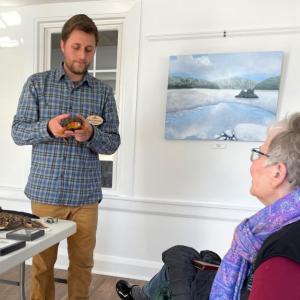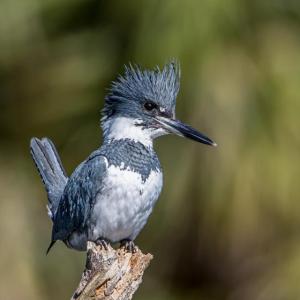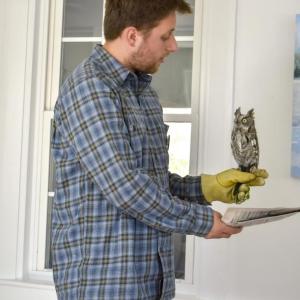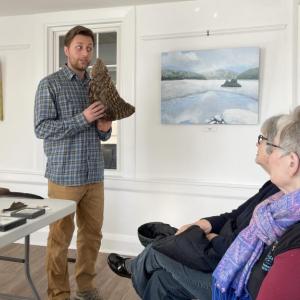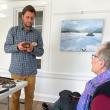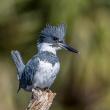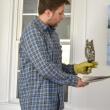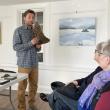The kingfisher and the train
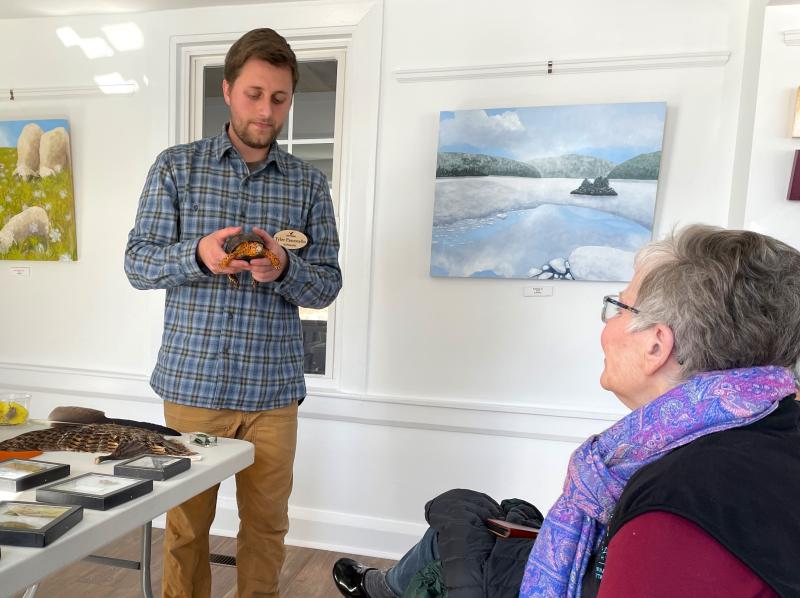 Tyler Pascocello introduces Linus the turtle during a talk on biomimicry at Oak Hill Farm in Boothbay Harbor. FRITZ FREUDENBERGER/Boothbay Register
Tyler Pascocello introduces Linus the turtle during a talk on biomimicry at Oak Hill Farm in Boothbay Harbor. FRITZ FREUDENBERGER/Boothbay Register
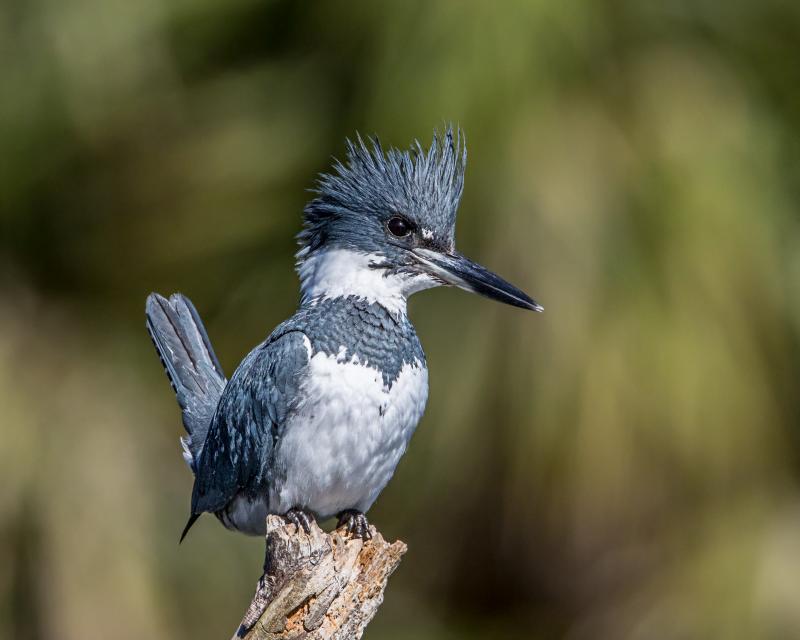 The belted kingfisher, a common sight in Maine. It’s Japanese counterpart inspired engineering solutions for the country’s bullet trains. Photo by Andy Morffew courtesy of WIkimedia Commons under the Creative Commons Attribution 2.0 Generic license.
The belted kingfisher, a common sight in Maine. It’s Japanese counterpart inspired engineering solutions for the country’s bullet trains. Photo by Andy Morffew courtesy of WIkimedia Commons under the Creative Commons Attribution 2.0 Generic license.
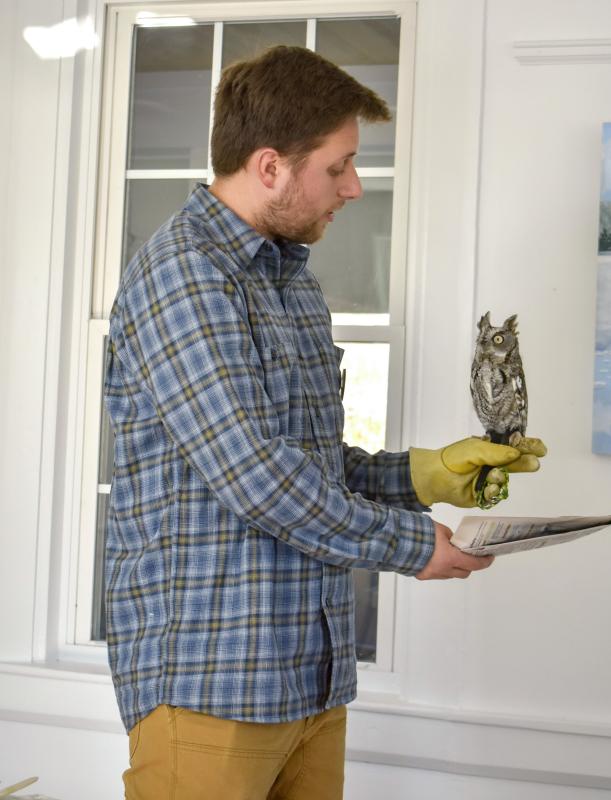 Wodin the one-eyed owl was an audience favorite. FRITZ FREUDENBERGER/Boothbay Register
Wodin the one-eyed owl was an audience favorite. FRITZ FREUDENBERGER/Boothbay Register
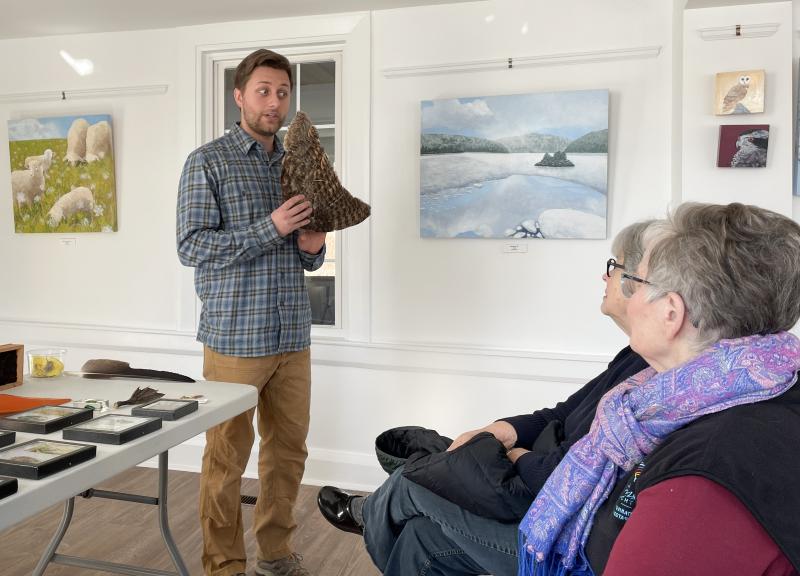 Tyler Pascocello explains how the fringed edges of owl wings help them fly almost silently. FRITZ FREUDENBERGER/Boothbay Register
Tyler Pascocello explains how the fringed edges of owl wings help them fly almost silently. FRITZ FREUDENBERGER/Boothbay Register
 Tyler Pascocello introduces Linus the turtle during a talk on biomimicry at Oak Hill Farm in Boothbay Harbor. FRITZ FREUDENBERGER/Boothbay Register
Tyler Pascocello introduces Linus the turtle during a talk on biomimicry at Oak Hill Farm in Boothbay Harbor. FRITZ FREUDENBERGER/Boothbay Register
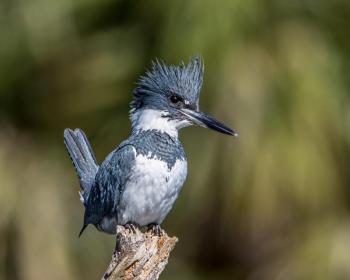 The belted kingfisher, a common sight in Maine. It’s Japanese counterpart inspired engineering solutions for the country’s bullet trains. Photo by Andy Morffew courtesy of WIkimedia Commons under the Creative Commons Attribution 2.0 Generic license.
The belted kingfisher, a common sight in Maine. It’s Japanese counterpart inspired engineering solutions for the country’s bullet trains. Photo by Andy Morffew courtesy of WIkimedia Commons under the Creative Commons Attribution 2.0 Generic license.
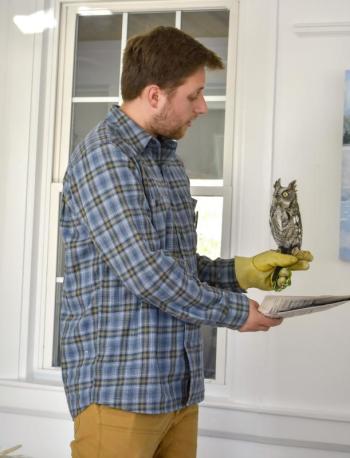 Wodin the one-eyed owl was an audience favorite. FRITZ FREUDENBERGER/Boothbay Register
Wodin the one-eyed owl was an audience favorite. FRITZ FREUDENBERGER/Boothbay Register
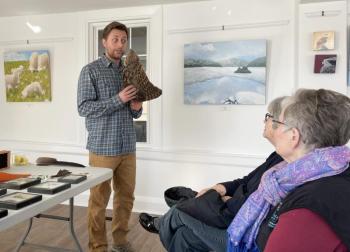 Tyler Pascocello explains how the fringed edges of owl wings help them fly almost silently. FRITZ FREUDENBERGER/Boothbay Register
Tyler Pascocello explains how the fringed edges of owl wings help them fly almost silently. FRITZ FREUDENBERGER/Boothbay Register
In the late 1990s, Japan’s famous bullet trains had a problem. Compressed air would build up as they went through tunnels, resulting in a large boom when they exited. The sound was so loud it bothered passengers, disturbed wildlife and woke sleeping neighbors. In addition, the air acted like a cushion, slowing the trains.
Fortunately, one of the engineers on the project was a birder. He observed how kingfishers could dive quietly and smoothly into the water due to the long, slender and unique shape of their beaks. Eventually, the kingfisher was the inspiration for a redesigned head of the train, both eliminating the boom and increasing its speed.
This is perhaps one of the most famous examples of biomimicry: emulating nature to solve human problems.
On Feb. 7, Tyler Pascocello from the Chewonki Traveling Natural History program gave a public talk on biomimicry at the Boothbay Region Land Trust Oak Point Farm. Armed with a collection of samples and live animals, Pascocello brought to life some of the marvelous breakthroughs inspired by nature.
“Being able to pass my passion on with other people is just always very exciting ...” he said. “Being able to give a lot of respect to animals and how amazing their adaptations are hopefully just connects us to animals in the sense that we're still using animals to inspire us and (use) their adaptations to help us survive in the world we're living in.”
Pascocello demonstrated several examples of how natural adaptations have been used as engineering inspiration. Some were clear connections, like a bird’s webbed feet inspiring swim fins. Others were harder to see. For example, burdock seedpods have tiny hooks that help them latch onto animals and propagate far away. Pascocello said the feature was an inspiration for Velcro. He also showed a blue morhpo butterfly. He said rather than having blue pigments, it appears colored because of how light reflects and refracts off it. According to him, that inspired developments in electronic screens to make them less damaging to eyes, reflecting light instead of projecting it.
He eventually introduced the audience to Linus the 35-year-old eastern box turtle, who he joked is one of Chewonki’s longest serving employees. The turtle has hinges in its body and can retract its head and legs into its shell for a defense that a black bear couldn't even bite through. Unfortunately, cars are its biggest threat. However, he said durable turtle shells like Linus’ have inspired helmets, tanks and other defensive gear to protect humans.
The crowd favorite was Wodin the one-eyed eastern screech owl, named after the Norse god who gave up his eye in exchange for wisdom. Chirping with excitement, or perhaps agitation, the owl charmed the audience with its personality and beautiful feathers. Wodin didn’t have much of a connection to biomimicry, but Pascocello used the bird as a reminder of the consequence of human actions. He said she lost her eye because she was hit by a car, likely the result of chasing a rodent in the road who was feasting on an apple or other garbage tossed by humans.
Pascocello said that it is one thing to learn about animals through books, but another to be able to introduce them. In person, he said, audiences can see the animal’s personalities and get to know them, hopefully better understanding their own connections to nature.
“Each one of them is so different from one another and hopefully kind of humbles us in a way that will lead to more caring about animals and potentially conservation of the wonderful wildlife we share our planet with,” Pasocello said.

